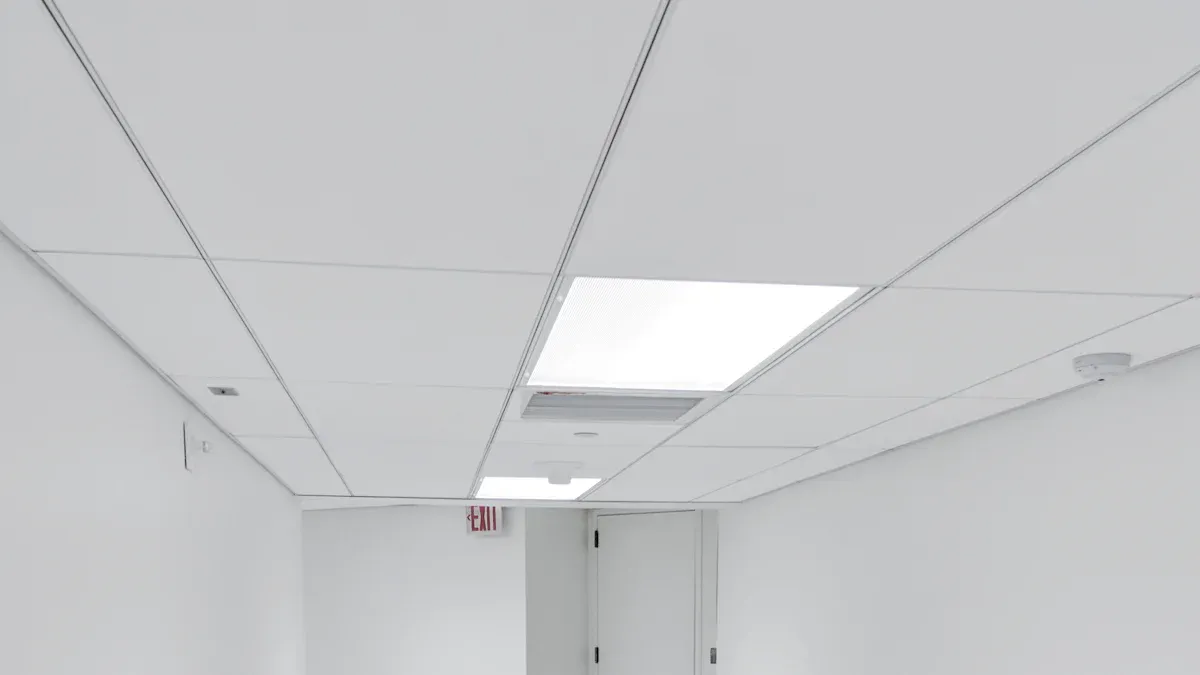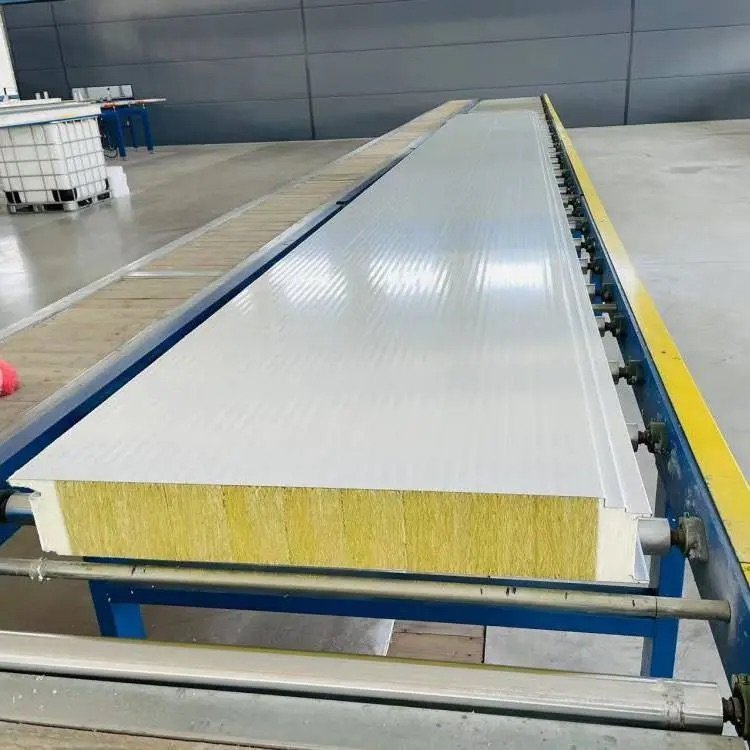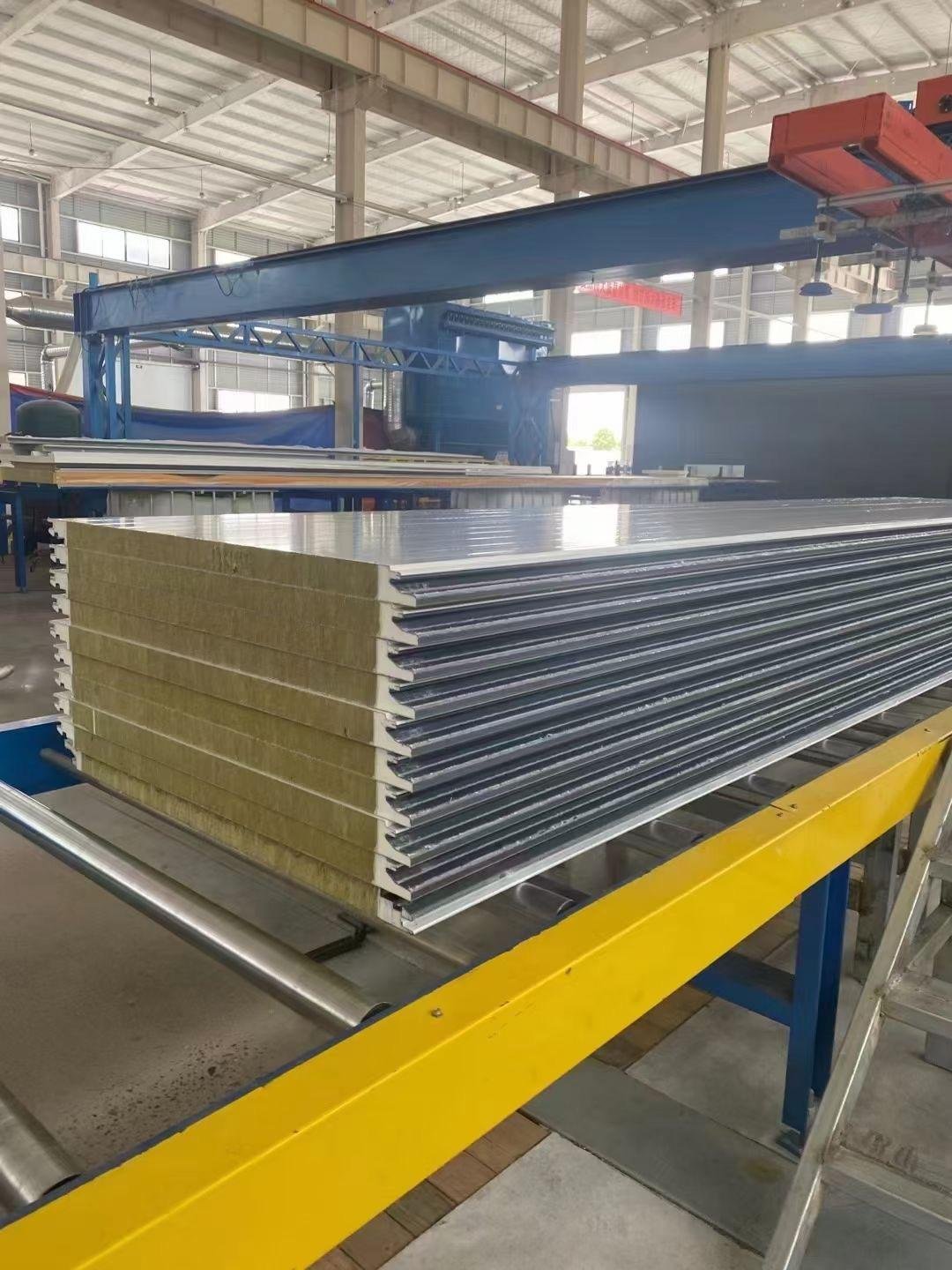
When building a cleanroom, you need special materials. Sandwich panels are very important for this purpose. These panels have smooth surfaces that stop dirt and germs. They help keep the area clean and meet hygiene rules. Their design also keeps the room strong and well-insulated. Using sandwich panels helps follow cleanroom rules while staying strong and useful.
Key Takeaways
Sandwich panels are important for cleanrooms. They keep spaces clean and meet health rules.
Pick the right sandwich panel for your cleanroom needs. Modular, hybrid, and hardwall panels each have special uses.
Choose materials carefully. Core materials like foam and mineral wool keep heat in, while outer layers like steel are easy to clean.
Focus on heat insulation and fire safety when choosing panels. These features protect items and make the space safer.
Ask cleanroom experts for help. Their advice can guide you to pick the best panels and follow rules.
Types of Sandwich Panels for Cleanrooms

Choosing the right cleanroom panels is very important. Each type has unique features to meet cleanroom needs. Below are three main types of panels to think about.
Modular Panels
Modular panels are made in factories and easy to install. They can be changed or expanded when needed. These panels keep temperatures steady with good insulation. They follow strict rules, making them great for industries like medicine and electronics.
Feature/Benefit | Details |
|---|---|
Flexibility | Can be changed to fit new needs. |
Quick Installation | Prefabricated design saves time during setup. |
Energy Saving | Insulation helps save energy and control temperature. |
Regulation Compliance | Meets cleanroom operation standards. |
Eco-Friendly | Made with materials that are better for the environment. |
These panels are perfect if you need a cleanroom that can change over time but still works well.
Hybrid Panels
Hybrid panels mix materials to work better. They are made for specific needs like keeping heat in, lasting long, and saving energy. These panels are used in industries like healthcare and food production. Their smooth design keeps them clean and sterile.
Hybrid panels also save energy, lowering costs. They are a good choice because they balance price and performance.
Hardwall Panels
Hardwall panels are strong and meet strict cleanroom rules. Their smooth surfaces stop dirt from sticking, keeping them clean. They are easy to wipe and disinfect, which is important for industries like electronics and medicine. Cleaning with special wipes and solutions keeps them in good shape.
Hardwall panels are best for cleanrooms needing strong environmental controls. They insulate well and handle frequent cleaning without losing quality.
Tip: Think about your cleanroom’s needs, like flexibility or durability, when picking modular, hybrid, or hardwall panels.
Material Selection for Sandwich Panels
Picking the right materials for sandwich panels is very important. These materials affect how well the panels work, how long they last, and if they meet cleanroom rules.
Core Materials
The middle part of the panel decides its strength and insulation. Common choices are polyurethane, mineral wool, and expanded polystyrene. These materials keep cleanrooms at steady temperatures and humidity levels.
Polyurethane: Lightweight and great at keeping heat inside.
Mineral Wool: Stops fires and blocks noise very well.
Expanded Polystyrene: A cheaper option that insulates fairly well.
Cleanroom panels often use these materials to stay strong and save energy.
Outer Layer Materials
The outside layer protects the panel and makes cleaning easy. Stainless steel and aluminum are popular because they work well. Newer materials like fiberglass-reinforced plastic (FRP) and uPVC are also being used for their toughness and smooth surfaces.
Stainless Steel: Doesn’t rust and handles lots of cleaning.
Aluminum: Strong but light, perfect for cleanrooms.
FRP: Strong and smooth, great for keeping clean.
uPVC: Affordable, tough, and simple to clean.
These materials help stop dirt and germs while following cleanroom rules.
Durability and Longevity
Panels need to be tough to handle cleaning and wear over time. Comparing how materials perform can help you pick the best one:
Metric | What It Does |
|---|---|
Keeps cleanrooms at the right temperature. | |
Ease of Maintenance | Makes sure panels stay clean and useful. |
Stops fires from spreading and keeps people safe. | |
Material Innovations | Shows new ideas that make panels stronger and better. |
Modern materials like FRP and polycarbonate last longer, while stainless steel stays dependable. Using these materials makes cleanroom panels strong and safe for a long time.
Tip: Pick materials that are easy to clean, durable, and good at insulating for the best cleanroom results.
Key Design Considerations for Cleanroom Sandwich Panels
Thermal Insulation
Good thermal insulation is very important in cleanrooms. Sandwich panels with strong insulation keep temperatures and humidity steady. This helps stop condensation and protects sensitive items like medicines. The core materials, like polyurethane or mineral wool, block heat transfer. This lowers the work for HVAC systems, saving energy and cutting costs.
Using these panels also reduces energy use and pollution. They are made to save energy, making them eco-friendly for cleanrooms. Picking panels with great insulation keeps products safe and saves money over time.
Fire Resistance
Fire resistance is a key feature for cleanroom panels. Materials like mineral wool cores protect well against fire. These panels slow flames, giving more time to act in emergencies. This is very important in places with flammable materials.
Choose panels that meet fire safety rules. This keeps your cleanroom safe and follows regulations. Fire-resistant panels give safety and peace of mind for your facility.
Ease of Installation
Easy installation makes cleanroom building faster and simpler. Prefabricated sandwich panels are made in factories, ensuring high quality. Their modular design allows quick setup, saving time and money.
Your cleanroom can be ready much faster than with old methods. This avoids delays and ensures smooth construction. Choosing panels that are easy to install saves effort and keeps the area clean.
Tip: Use prefabricated panels for quicker setup and better quality.
Maintenance and Cleaning
Taking care of sandwich panels is very important. It keeps them working well and meeting cleanliness rules. Regular cleaning helps the cleanroom stay safe and hygienic. It also makes the panels last longer and stops contamination.
Plan regular cleaning and decontamination times. This keeps the cleanroom clean and up to standards. Use cleaning products that won’t harm the panel materials. Strong chemicals can ruin the surface and make cleaning harder. Choose soft tools to avoid scratching or damaging the panels.
Check the panels often for cracks or dents. Fixing damage quickly stops bigger problems and keeps the cleanroom safe. Keep records of cleaning and repairs. This helps you see how well cleaning works and spot repeated issues.
Focus on cleaning the smooth panel surfaces. These surfaces are made to stop dirt and germs. Wipe them with approved cleaners and leave no residue. Regular cleaning keeps the panels looking good and working properly.
By doing these steps, your cleanroom will meet industry rules. Good care protects your panels and keeps the space safe for important work.
Choosing the Right Sandwich Panels for Cleanroom Applications
Matching Panels to Cleanroom Classifications
Pick sandwich panels that fit your cleanroom’s class. Cleanrooms are grouped by how much contamination they allow. For example, a Class 1 cleanroom needs stricter controls than a Class 1000 cleanroom. The panels you choose must meet your cleanroom’s cleanliness and environmental needs.
Look for panels that are easy to clean. Smooth surfaces that block dirt and germs are very important. Materials like stainless steel or fiberglass-reinforced plastic (FRP) work well. These materials make cleaning simple and help meet strict cleanroom rules.
Tip: Always check your cleanroom’s class before picking panels to follow industry rules.
Cost vs. Performance
Finding a balance between cost and quality is important. Cheaper panels might save money now but may not last long. High-quality panels can save money later by needing less maintenance and using less energy.
Think about what your cleanroom needs most. If keeping heat in is key, panels with polyurethane cores are worth it. If fire safety matters more, mineral wool cores are a better pick. Look at the long-term benefits to make the best choice.
Consulting with Experts
Talk to cleanroom experts to make choosing panels easier. They can help you pick the right panels for your cleanroom’s needs. Experts also know the rules and can ensure your cleanroom meets them.
They can suggest new materials and designs that last longer and clean better. Their advice helps you build a cleanroom that works well and saves money.
Note: Experts help you make smart choices, saving time and avoiding mistakes.
Sandwich panels are key for cleanroom design. They help keep the area clean, strong, and follow rules. These panels control temperature and humidity, making the space stable. They also support sterile practices and improve how things work. Picking the right panels ensures they last long and save money.
The table below shows why sandwich panels are great for cleanrooms:
Advantage | Description |
|---|---|
Keeps steady temperature and humidity to stop condensation. | |
Promoting Aseptic Practices | Smooth surfaces are easy to clean, lowering contamination risks. |
Creating a Durable Environment | Strong panels meet rules and help make high-quality products. |
Superior Speed and Efficiency | Pre-made panels make building faster, so work starts sooner. |
Enhanced Cleanliness | Smooth surfaces reduce dust and germs, keeping the area sterile. |
For the best results, talk to cleanroom experts. They can help your cleanroom meet rules and work better while saving money.
FAQ
What are sandwich panels used for in cleanrooms?
Sandwich panels are used for walls, ceilings, and dividers. They keep the area clean and control temperature. Their smooth surfaces make cleaning simple. This helps industries like medicine and electronics stay sterile.
How do you choose the right sandwich panels for your cleanroom?
Pick panels that match your cleanroom’s requirements. Think about insulation, fire safety, and strength. Talk to experts to ensure they meet your needs and follow rules.
Are sandwich panels easy to maintain?
Yes, they are made to be easy to care for. Their smooth surfaces stop dirt and germs from sticking. Cleaning them regularly keeps them in great shape for years.
Can sandwich panels improve energy efficiency?
Yes, they help save energy by keeping heat inside. This keeps temperatures steady and lowers energy use. It also makes cleanrooms more eco-friendly.
Do sandwich panels meet fire safety standards?
Yes, many panels, like those with mineral wool, are fire-safe. They slow flames, giving more time during emergencies. These panels meet strict safety rules.







